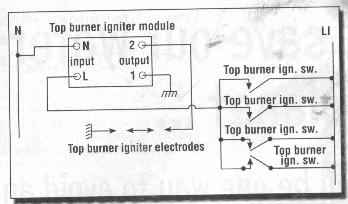K8MHZ
Senior Member
- Occupation
- Electrician
I just got a gas stove. It has an electric spark igniter. The spark jumps from an electrode to the grounded frame.
I looked at a diagram for such a device and it shows the N and GND separate, with the spark jumping to the ground.
To me, that means that the igniter wouldn't work if there were no EGC, like in an old house with a two prong receptacle and a three prong adapter.
Is this correct? I am not going to disconnect my EGC to find out, but I am wondering if any of you have run across a gas stove where the igniter wouldn't work because of a lack of an EGC.
The diagram also showed that the spark was 2.3 amps for the spark.
I looked at a diagram for such a device and it shows the N and GND separate, with the spark jumping to the ground.
To me, that means that the igniter wouldn't work if there were no EGC, like in an old house with a two prong receptacle and a three prong adapter.
Is this correct? I am not going to disconnect my EGC to find out, but I am wondering if any of you have run across a gas stove where the igniter wouldn't work because of a lack of an EGC.
The diagram also showed that the spark was 2.3 amps for the spark.


